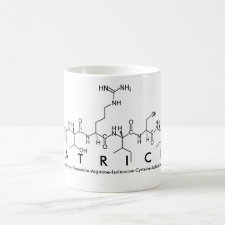
Authors: Díaz-Bao M, Barreiro R, Regal P, Cepeda A, Fente C
Article Title: Evaluation of Molecularly Imprinted Polymers for the Simultaneous SPE of Six Corticosteroids in Milk.
Publication date: 2012
Journal: Chromatographia
Volume: 75
Issue: (5)
Page numbers: 223-231.
DOI: 10.1007/s10337-012-2182-z
Abstract: A molecularly imprinted solid-phase extraction procedure was optimized for the simultaneous extraction of six corticosteroids commonly employed in animal husbandry. Two different molecularly imprinted polymers (MIPs) were synthetized by precipitation polymerization, using dexamethasone (DM) and flumethasone (FLU) as template molecules. Methacrylic acid was used as functional monomer and divinylbenzene as cross-linker, and the selected porogen was a solution of acetonitrile and toluene (3:1). After removal of the template, both molecularly imprinted and non-imprinted polymers were placed into glass cartridges to perform solid-phase extraction experiments. Loading, washing and elution steps were optimized for each MIP in order to test the suitability of the selected template molecules DM and FLU to provide selective polymeric sites for corticosteroids. Recovery measurements were performed by HPLC-MS/MS. The maximum recovery for all corticosteroids was achieved with DM-based MIP when loading with toluene and washing with 5% acetonitrile in toluene, and eluting with 1% acetic acid in methanol. When cleaning-up milk samples spiked with corticosteroids, the recovery of DM-based polymer decreased. However, the efficiency of FLU-based polymer clearly improved even when a strong matrix effect was observed. Additionally, two frequently used commercial solid-phase extraction (SPE) cartridges were compared with imprinted polymers. The commercial SPE cartridges gave good recoveries only for specific analytes while MIPs provided good recoveries for all analyzed corticosteroids
Template and target information: corticosteroids, dexamethasone, DM, flumethasone, FLU, 6α-methylprednisolone, MPRD, cortisone, COR, prednisolone, PRED, Hydrocortisone, HCOR
Author keywords: MIP, corticosteroids, methacrylic acid, divinylbenzene, milk, SPE



Join the Society for Molecular Imprinting

New items RSS feed
Sign-up for e-mail updates:
Choose between receiving an occasional newsletter or more frequent e-mail alerts.
Click here to go to the sign-up page.
Is your name elemental or peptidic? Enter your name and find out by clicking either of the buttons below!
Other products you may like:
 MIPdatabase
MIPdatabase









